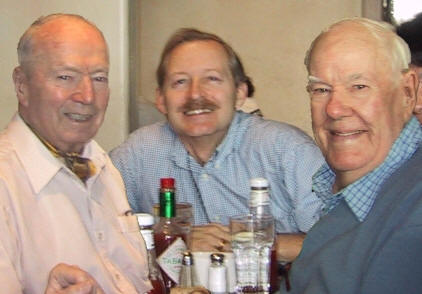|
|
|
|
Jim and Howard's Artwork:
The following
pieces have not been spoken for. Please let me know if you are
interested. (Click on thumbnail to see a larger picture).
|
Canvas
Width
(Inches) |
Canvas
Height
(Inches) |
Frame
Width
(Inches) |
Frame
Height
(Inches) |

1) St. Clair Family
Crest, Print |
8 |
10.25 |
13.5 |
17.5 |
 2) Toulon, Le Retour, Fishing Boats,
1954, Oil on Canvas, E Baboulene 2) Toulon, Le Retour, Fishing Boats,
1954, Oil on Canvas, E Baboulene
Eugene Baboulene
(1905-1994)
Born in Toulon, France, Eugene Baboulene attended art school in
Provence. Baboulene painted in the style of Impressionism, and his
subjects were usually provincial in nature. Aside from being an
accomplished, albeit generally unknown painter today, Baboulene was
also an illustrator and his drawings can be found in a number of
books. |
21 |
14.5 |
28.5 |
22 |
 3) View
of S de Nice (date?) Old Lithograth with Matte. Don't know if
it is a copy or original? ? 3) View
of S de Nice (date?) Old Lithograth with Matte. Don't know if
it is a copy or original? ? |
|
11.25 |
9 21.25 |
17.25 |
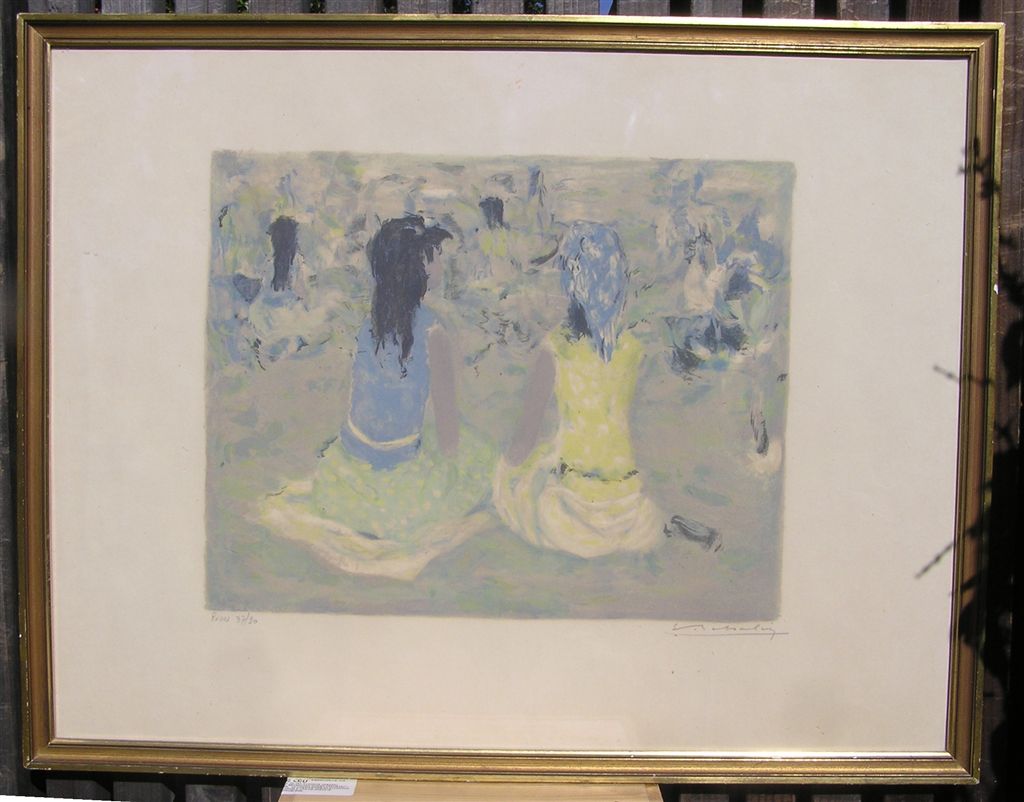
4) Reves (Dreams) (undated) Eugene
Baboulene, Lithograph No. 87 of 90
|
16 |
12.5 |
27.75 |
21 |

5) Apres la Chasse (1847), Watercolor
Girot
|
21 |
15 |
28.5 |
22.5 |
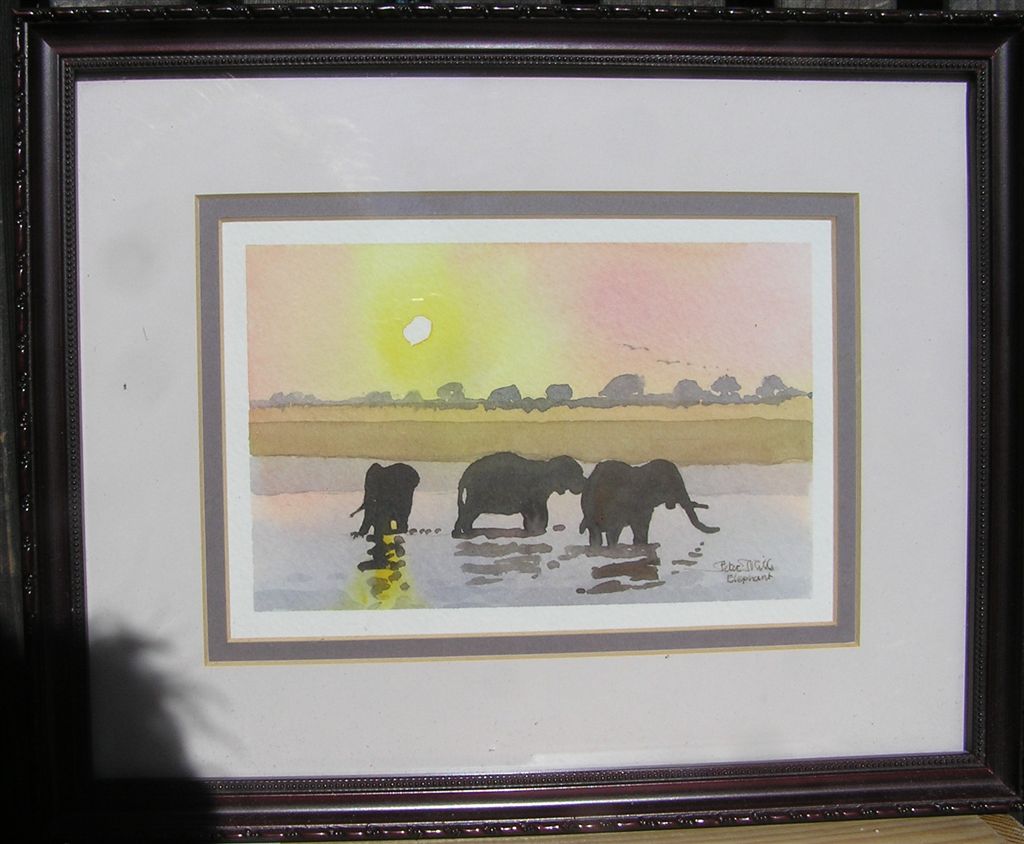
6) Elephants in River (undated),
Watercolor, Peter de Giles? |
6.75 |
4.5 |
11 |
9 |
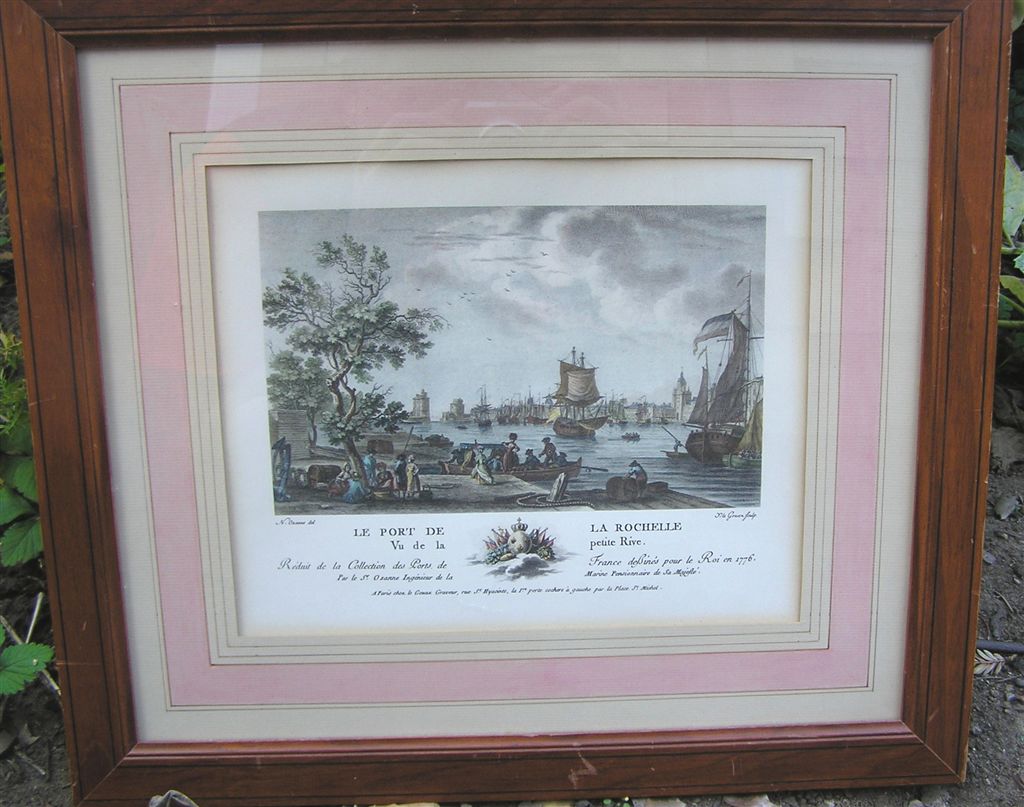 7) Le Port de la Rochelle
1776, N. Ozanne del, (lithograph). I think this was
given to Jim and Howard when they either moved to the South of
France or when they returned to the United States. It is
signed on the back by a lot of friends. 7) Le Port de la Rochelle
1776, N. Ozanne del, (lithograph). I think this was
given to Jim and Howard when they either moved to the South of
France or when they returned to the United States. It is
signed on the back by a lot of friends. |
10.75 |
17.5 |
8.5 |
15.5 |
| |
|
|
|
|
|
The following
pieces have been spoken for.(Click on thumbnail to see a larger picture). |
|
|
|
|
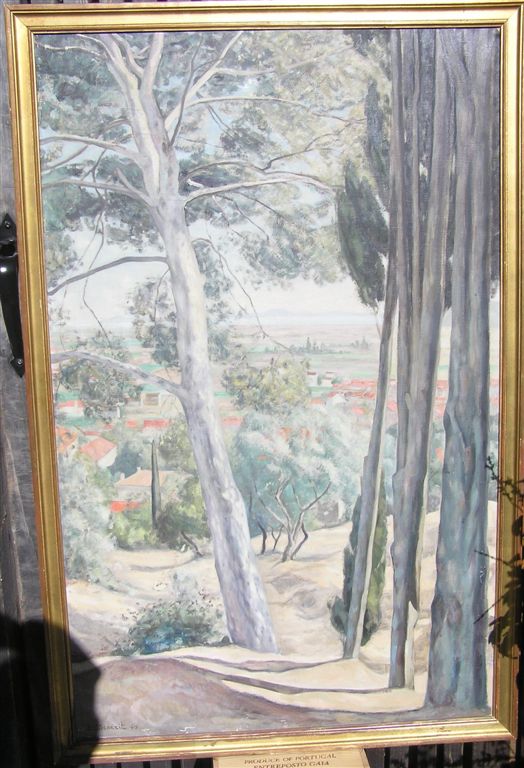 A) Trees
(1945), (no title),
impressionistic , s/ EC Benezit oil on canvas, Emmanuel Charles Louis Benezit (French, 1887-1975) Son of Emmanuel Benezit, author of
Dictionary of Painters, Sculptors, Draughtsmen, and Engravers. A) Trees
(1945), (no title),
impressionistic , s/ EC Benezit oil on canvas, Emmanuel Charles Louis Benezit (French, 1887-1975) Son of Emmanuel Benezit, author of
Dictionary of Painters, Sculptors, Draughtsmen, and Engravers.
Emmanuel Charles was a landscapist
who studied at the Academie Julian in Paris and was artistically
encouraged by his father’s friends Camille Pissaro, Alfred Sisliy
and Claude Monet with whom he painted at the age of eighteen. He
showed at the Salon des Independents with the Impressionists, Salon
d’Automne and Salon des Tuileries. |
16 |
13 |
20.5 |
17.25 |
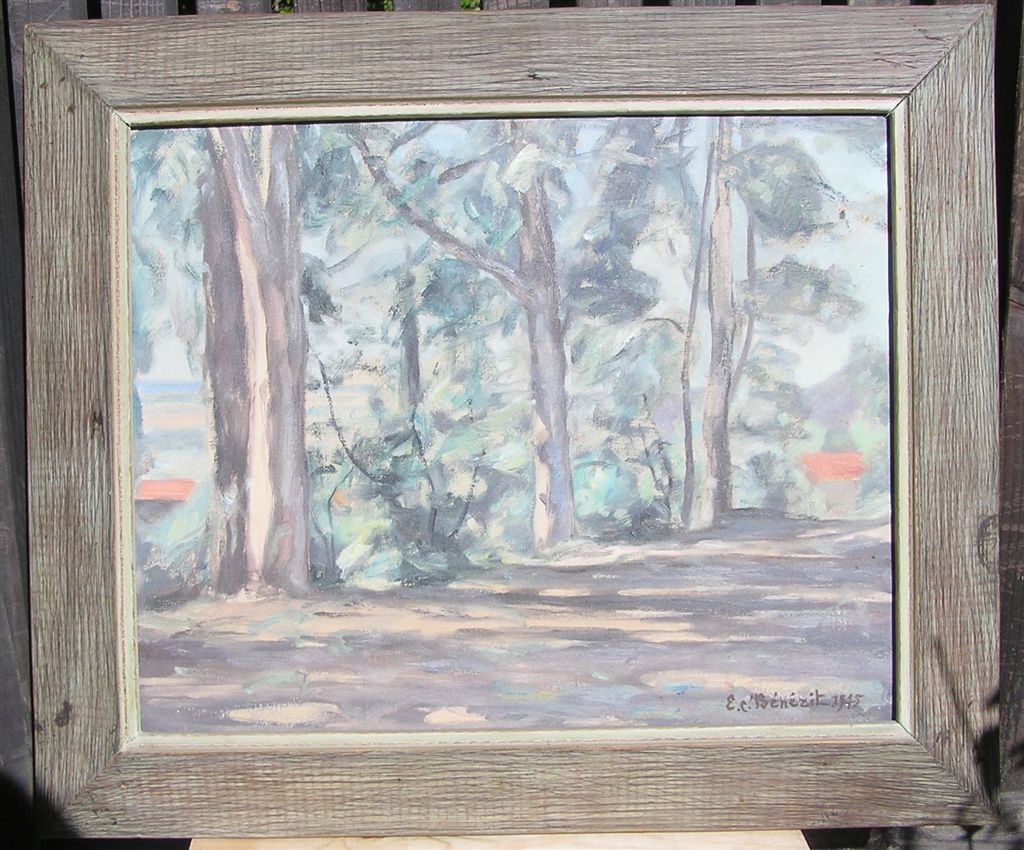
B) Trees and Landscape
(1943), (no title) , s/ EC Benezit (Emmanuel Charles Louis Benezit), Oil on Canvas |
45 |
28.75 |
31.75 |
48 |
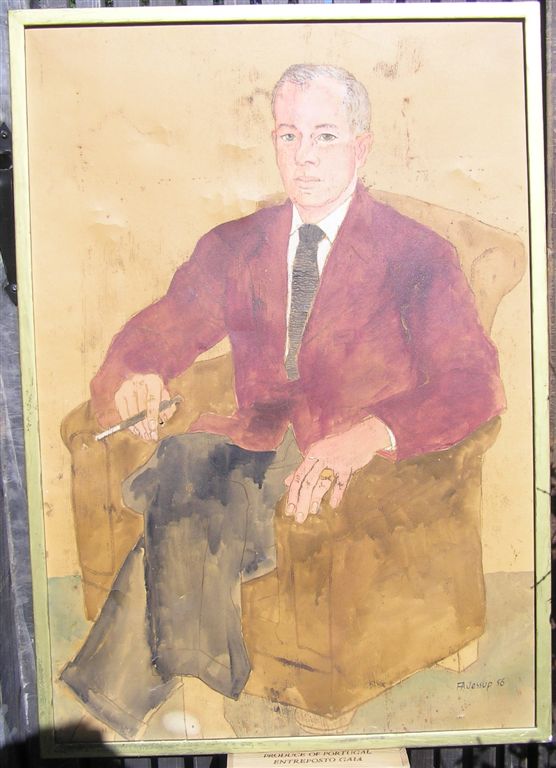 C) Howard
Clausen (1956), Oil on Canvas, FA Jessup (Fred) C) Howard
Clausen (1956), Oil on Canvas, FA Jessup (Fred)
"FA Jessup", dubbed a "Modern Matisse"
Jessup left Australia for France where he mastered a strong sense of
color and composition of which his paintings perfectly illustrate. |
27.5 |
40 |
41.75 |
29 |
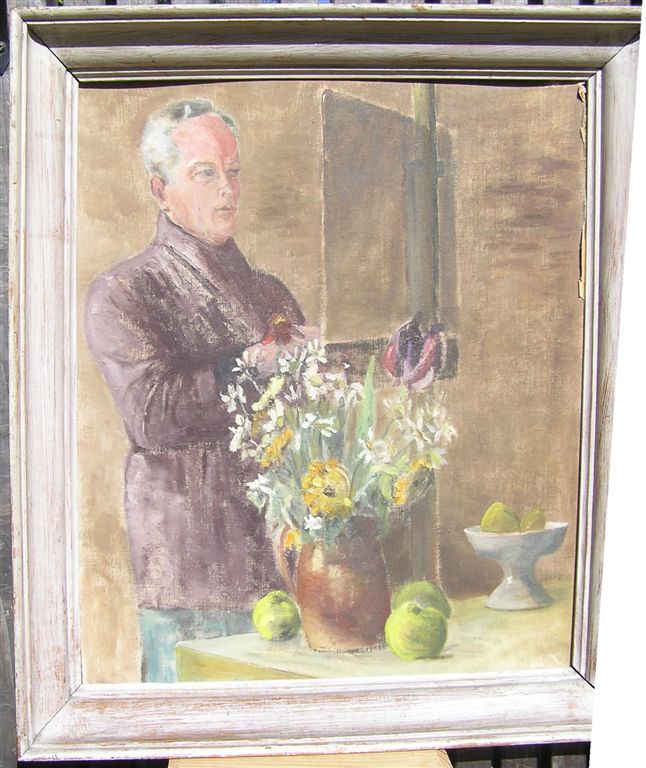
D) Howard Clausen, Self Portrait,
Oil on Canvas. |
19 |
22.5 |
23.5 |
27 |
 E) Bird
Feeding near sur La Cote d'Azur France (undated), Howard Clausen,
Watercolor E) Bird
Feeding near sur La Cote d'Azur France (undated), Howard Clausen,
Watercolor |
12.25 |
9.5 |
14.5 |
14.25 |
 F) California
Landscape (undated), Pastel, (Duane) Wakeham F) California
Landscape (undated), Pastel, (Duane) Wakeham
TD
? |
6 |
3.5 |
12.25 |
9.5 |

G) Still life of Pitchers and Teapot
(undated), FA Jessup (Fred), Oil on Canvas |
32 |
25.5 |
No frame |
No frame |

H) Still life of Flowers and Fruit
(1955),FA Jessup (Fred) , Oil on Canvas
|
27.5 |
40 |
29.25 |
42 |
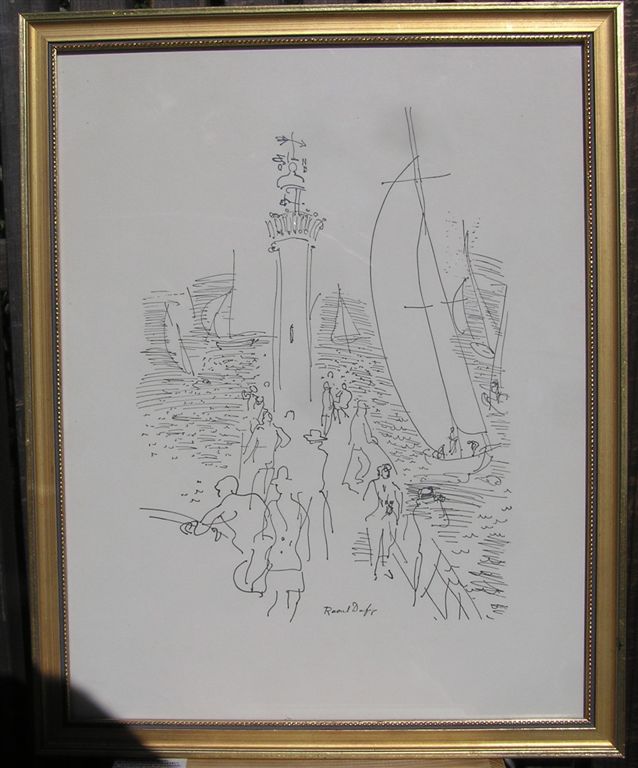 I) French Harbor and Lighthouse (undated
and not titled), s/ Raoul Dufy,
Pen and Ink Drawing I) French Harbor and Lighthouse (undated
and not titled), s/ Raoul Dufy,
Pen and Ink Drawing
Raoul Dufy (June 3, 1877 – March 23,
1953) was a French Fauvist painter. He developed a colourful,
decorative style that became fashionable for designs for ceramics,
textiles and decorative schemes for public buildings. He is noted
for scenes of open-air social events. Dufy was born at Le Havre, in
Normandy, one of a family of nine members. He left school at the age
of 14 to work in a coffee importing company. In 1895 when he was 18,
he started evening classes in art at Le Havre École des Beaux-Arts.
He and Othon Friesz, a school friend, studied the works of Eugène
Boudin in the museum in Le Havre
In 1900, after a
year of military service, Raoul won a scholarship enabling him to
attend the École Nationale des Beaux-Arts in Paris, where he was a
fellow student with Georges Braque. The impressionist landscapists,
such as Claude Monet and Camille Pissarro, influenced him.
Introduced to
Berthe Weill in 1902, she showed his work in her gallery. Henri
Matisse's Luxe, Calme et Volupté, which Dufy saw at the Salon des
Indépendants in 1905, was a revelation to the young artist and
directed his interest towards Fauvism. Les Fauves (wild beasts)
emphasised bright colour and rich bold contours in their work, and
Dufy’s painting reflects this approach until about 1909, when
contact with the work of Paul Cézanne led him to adopt a somewhat
subtler technique. It was not until 1920, after he had flirted
briefly with yet another style, cubism, that Dufy developed his own
distinctive approach involving skeletal structures, arranged in a
diminished perspective, and the use of light washes of colour put on
by swift brush strokes in a manner that came to be known as
stenographic.
Dufy's cheerful
oils and watercolours depict yachting scenes, sparkling views of the
French Riviera, chic parties and musical events. The optimistic and
fashionably decorative and illustrative nature of much of his work
has meant that his output is less highly critically valued than
artists who treat a wider range of social concerns.
In 1938, Dufy
completed one of the largest paintings ever done, a huge and
immensely popular epic to electricity, the fresco La Fée Electricité
for the Exposition Internationale in Paris.
Dufy also acquired
a reputation as an illustrator and an applied artist. He changed the
face of fashion and fabric design with his work for Paul Poiret. He
painted murals for public buildings, and produced a prodigious
number of tapestries and ceramic designs. His plates appear in books
by Guillaume Apollinaire, Stéphane Mallarmé and André Gide.
http://www.weinstein.com/dufy/dufy_biophoto.jpg Dufy died near
Forcalquier, France, on March 23, 1953, and was buried not far from
Matisse in the Cimiez Monastery Cemetery in Cimiez, a suburb of the
city of Nice, France. |
13.5 |
17.75 |
15.5 |
19.5 |
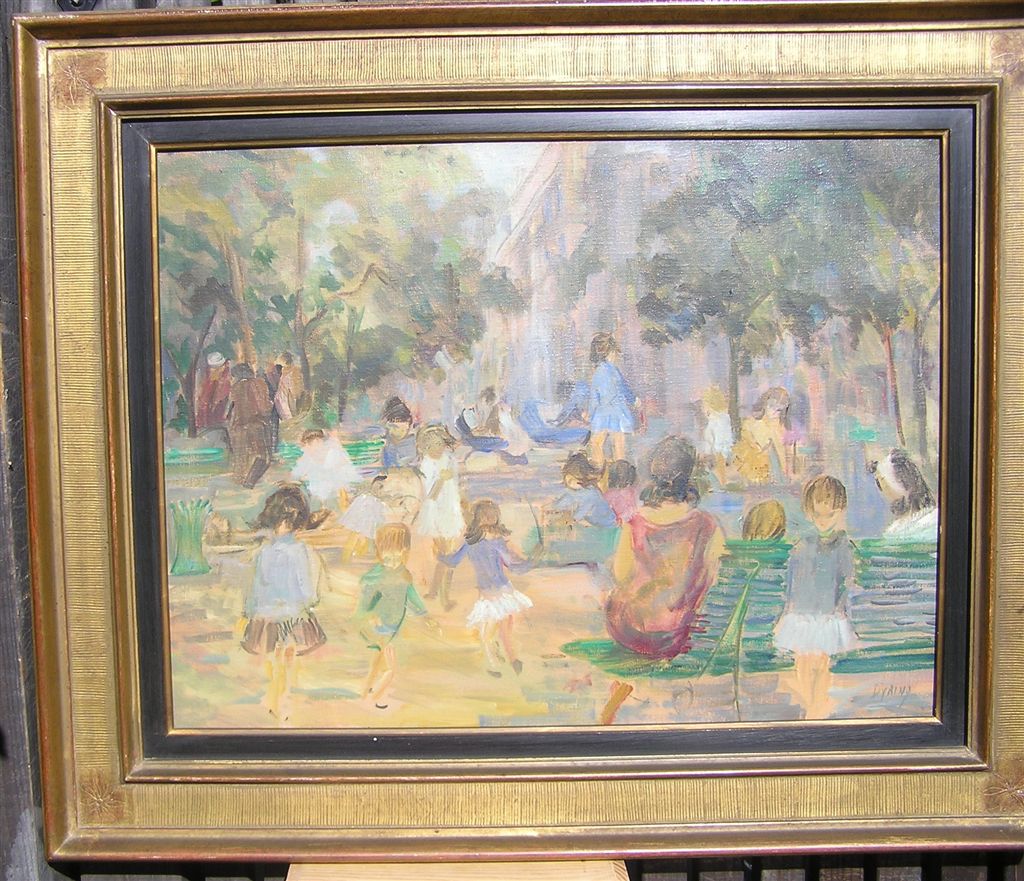 J) 1964
Children in Gardens (1964), Moya Dyring, Oil on Canvas J) 1964
Children in Gardens (1964), Moya Dyring, Oil on Canvas
DYRING, MOYA CLAIRE (1909-1967),
artist, was born on 10 February 1909 at Coburg, Melbourne, third
child of Carl Peter Wilhelm Dyring, medical practitioner, and his
second wife Dagmar Alexandra Esther, née Cohn, both Victorian born.
Moya was educated (1917-27) at Firbank Church of England Girls'
Grammar School, Brighton. After visiting Paris in 1928, she studied
(1929-32) at the National Gallery schools, Melbourne, and shared
fellow student Sam Atyeo's interest in artistic innovation.
Classical
modernism engaged her attention in the early 1930s. She painted at
the George Bell school and studied under Rah Fizelle in Sydney; Mary
Alice Evatt and Cynthia Reed were her colleagues. For several months
in 1937 she took charge of Heide, the home and garden of John and
Sunday Reed, at Bulleen, Melbourne. The Reeds were pivotal both to
her sympathy for modernism and her belief in congenial fellowship.
She enjoyed something of the intense relationship with Sunday Reed
that the latter would subsequently extend to Joy Hester. In June
Dyring held an exhibition, opened by H. V. Evatt, at the Riddell
Gallery, Melbourne. Less enthusiastic than the Reeds and the Evatts
about her art, Basil Burdett wrote of her 'somewhat incoherent
interpretation of modern ideas', although he did acknowledge that
her work had 'audacity of colour and a certain monumental feeling
for form . . . qualities rare enough in Australian painting'.
In August Dyring
embarked for Panama whence she travelled by bus to New York,
breaking her journey to view major galleries. She had intended to
paint in the United States of America, but disliked the work of
contemporary American artists and sailed for France. In 1938 she was
based in Paris, taking advantage of Atyeo's contacts within the
avant-garde. She studied at the Académie Colarossi, the Académie de
la Grande Chaumière and with Andre Lhote, although by October she
denounced him as a 'racketeer'.
In 1939 Dyring and
Atyeo settled on a farm at Vence, France; inspired by memories of
Heide, they grew fruit and flowers. Sam accepted a commission to
decorate a house in Dominica, West Indies, leaving Moya at Vence.
Evacuated to Australia via South Africa, where she painted and
searched for tribal art, she then journeyed to Dominica and married
Atyeo. They were not happy, neither painted and Dyring was ill.
Evatt offered Atyeo work and Dyring accompanied him to the U.S.A.
She viewed art, painted occasionally and claimed to have exhibited
in Washington in 1943. After World War II Evatt found Sam various
postings, while Moya returned to Paris to pursue a full-time career
in art. They were to be divorced in 1950.
From about 1946
Dyring's art was more personal than innovative. She gained a
considerable reputation among French regionalist and nationalist
artists for her sympathetic appreciation of provincial scenes and
life. Bernard Smith placed her in the French tradition of intimiste
painters. In 1948 she leased and renovated an apartment on the Ile
St Louis, which, as Chez Moya, became a centre for Australians who
enjoyed her hospitality, cooking and practical assistance. She
revisited Australia and exhibited in various cities in 1950, 1953,
1956, 1960 and 1963; the press carried her reports of Parisian
cultural life.
Dyring held a solo
exhibition in London in December 1949 and was in close contact with
expatriate Australians, among them Loudon Sainthill, Donald Friend,
David Strachan, Alannah Coleman and Margaret Olley. In 1961 she
curated the Australian section of the Paris Biennale. She died of
cancer on 4 January 1967 at Wimbledon, London. An apartment for
visiting Australian artists was established in her memory at the
Cité Internationale des Arts, Paris. |
23.5 |
17.5 |
31.25 |
25.25 |
 J) Mme
V Ramgeant son Liege (Etude) (undated), artist unknown, Oil on
Canvas J) Mme
V Ramgeant son Liege (Etude) (undated), artist unknown, Oil on
Canvas |
13.25 |
10 |
14 |
11 |

K) The Seine, Two Men in a Boat (1966), Moya Dyring, Oil on Canvas. See biography elsewhere on this
page. |
13.25 |
10.25 |
14 |
11 |
| |
|
|
|
|
|
|
